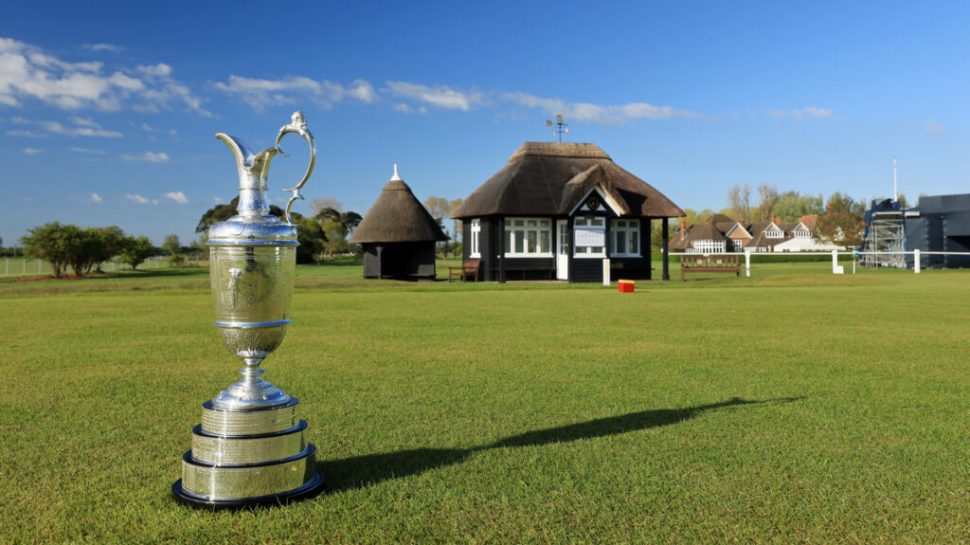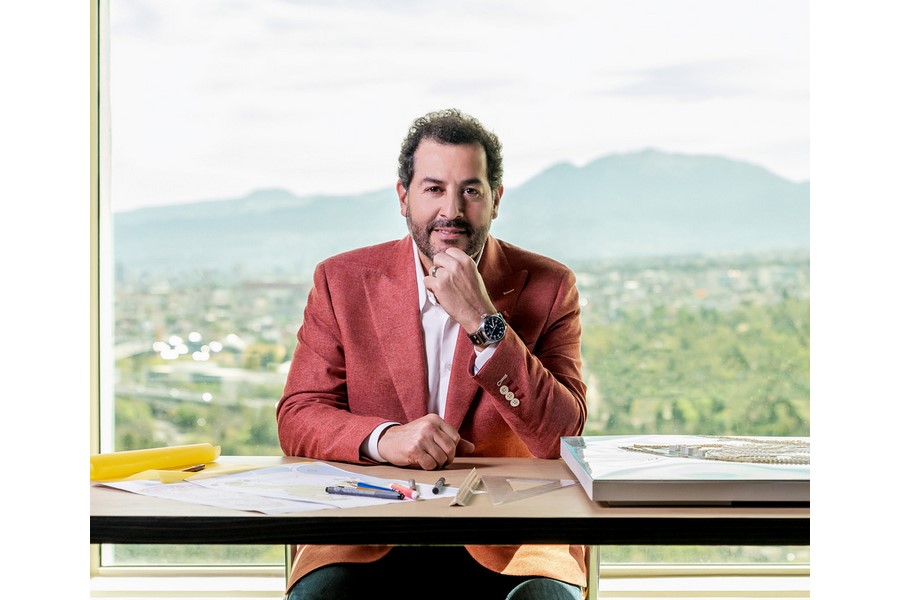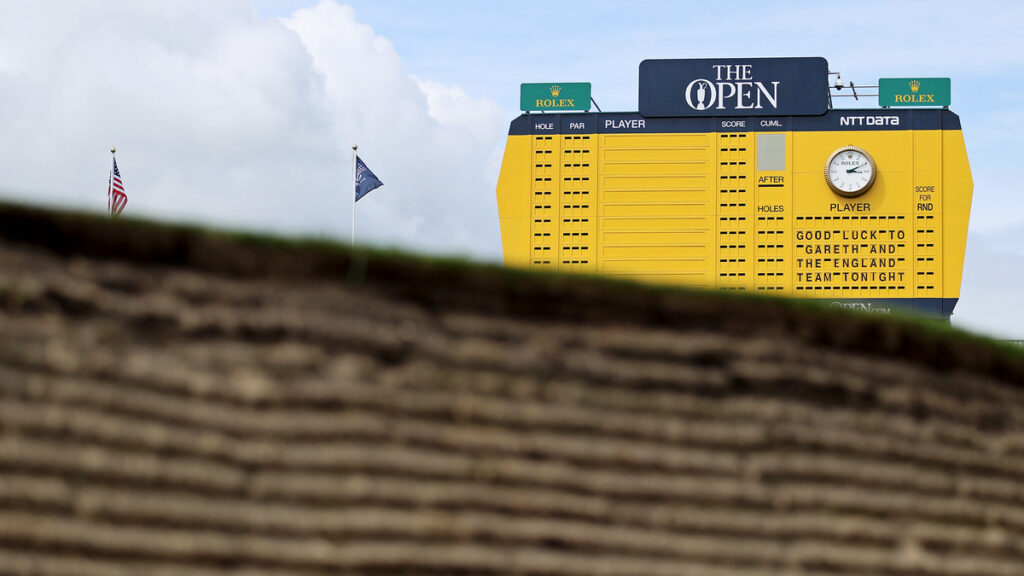
Estimated reading time: 12 minutes
How fitting the final major for 2021 ends with the oldest of the four with the 149th edition of The Open Championship contested for the 15th time at Royal St. George’s. The Sandwich-based links, with its towering dunes and adjoining location with the English Channel nearby will be a supreme challenge for the world’s finest players.
Royal St. George’s last hosted The Open in 2011 when Northern Ireland’s Darren Clarke took home the famed Claret Jug outlasting Dustin Johnson and Phil Mickelson who shared the runner-up position.
Royal St. George’s is renowned for its tumbling and heaving fairways. Balls can quickly carom into a wide variety of final destinations — both desirable and those far less so.
The links is the closest to metro London and the R&A expects to have crowd sizes of approximately 32,000 per day.
Constant adjustments are a staple when playing vintage links golf and Royal St. George’s executes this magnificently. The routing takes you in a number of different directions and the uncertainty of weather always looms when an Open Championship is contested. What can be benign at times can quickly flip around and be maddening for the ferocity of wind and penetrating rain.
The golf experience at Royal St. George’s is a true journey. Unfettered from a host of distractions permitting players to be totally encased within its splendid confines.
Royal St. George’s is unrelenting. Like an honest judge no bribes are accepted. The test of golf is comprehensive and among all links courses used for the championship the constant pressure on skillfully driving the ball is front and center.
Five architects were asked to provide their insights into what make Royal St. George’s one of the game’s premier championship courses and what it will take for one competitor to rise above them all and be proclaimed at the event’s conclusion as the “champion golfer of the year.”
***
You hear the words Royal St. George’s — what comes to mind immediately?
Mackenzie: Greg Norman’s final round 64 to blow the field away in 1993.
Stephens: I was born in Kent, England. For me, it is the best golf course in England. Designed by W Laidlaw Purves, a surgeon and unheralded golf course designer — it is unique with some saying it is unfair and others liking it. I have been fortunate to play all of the Cinque Ports foursome – Royal St Georges, Princes, Royal Cinque Ports and Littlestone — also by Purves — it’s unusual to have four top notch courses close by to each other. Royal St Georges is the top course in this area with the others are not far behind.
Kimber: The Halford Hewitt — the largest amateur tournament with 64 teams of 10 players.
Ebert: The scale of the course. Beautiful green, green surround and fairway undulations. The incredible forces of nature which have produced such an amazing dune landscape for golf. Bernard Darwin wrote about the ‘Links of Eiderdown’ when he was ill and in bed. He would rearrange his Eiderdown to create amazing links landscapes. The Royal St. George’s dunes would have been one of his wilder creations!
Pizá: Tradition and rival. The first course to host an Open away from Scotland. One of the most unique experiences one will have on a links course. A beautiful layout from 1894 and way ahead of its time.
Gaunt: The enormous setting makes the course special, plus the way in which the holes were laid out by Dr Laidlaw Purves – they nestle in amongst the wilderness – plus, you venture off the fairway and you’ll find wild asparagus in the roughs!

How much does the overall scale of the property have an impact on how the course plays?
Ebert: The huge scale means it produces a wonderful feeling of space and expansiveness. It makes everyone feel they are on a ‘big’ course. I do not think it affects the way individual holes and hence the course plays apart from almost never being able to hit it onto the wrong hole.
Stephens: It is huge and spread out compared to other courses on the Open rota. It gives some holes more individuality rather than be close to other holes. Some of the dunes are enormous and other areas are open and exposed with subtle contours there is so much variety in terms of holes you get the feeling that it is not repetitive. Also, wind can be a huge factor as the size of the property allows the holes to be played in different directions which makes it more challenging.
Gaunt: It totally influences play, as the course is so exposed to the elements, which is what makes it so interesting to play. The undulating terrain adds to this, with some dramatic, taller dunes at the southern end of the property at the 4th and 5th — slightly less challenging sections in the middle and northern parts of the course.
Kimber: Mostly on its forgiveness – there is none, it is unrelenting. You can’t miss your fairway and get lucky by being in the middle of an adjacent one.
Pizá: Scale matters. A great impact and the result are a beautiful, exciting routing which varies in length, par, and orientation against a wide-open landscape.
One discovers a close to perfect course ready to test your skill, experience, and determination. RSG takes the golfer through a great experience with an excellent challenge, balance of par, hole orientation and wind variations.
Mackenzie: With the absence of adjacent car parks, Seve would have struggled! Seriously, every hole stands alone in the dunes. There is no hiding and rarely an escape for a wayward shot.
Royal St George’s …
— PGA TOUR (@PGATOUR) July 13, 2021
Delightful. 👌 pic.twitter.com/W3hJ0umh13
The key holes to watch at this week’s Open Championship are what and why?
Kimber: The 10th, – one of the toughest approach shots on the whole open rota — if these guys aren’t driving the green! The 14th, – sneaky par 5 there will many birdies but if the prevailing SW picks up some big numbers can happen. The 18th, – ridge in the middle of the fairway effective narrows the fairway making it very hard to hit combined with the toughest closing green complex on the rota – it won’t yield many birdies.
Mackenzie: The 14th is scary even for the best players in the world. As with all great par fives glory and disaster are not far apart. I love watching that hole, but it must give Dustin Johnson nightmares. It is a course that sets a top-class relentless test from start to finish. The key is keeping it going throughout the round.
Pizá: I am looking forward to enjoying the holes which offer distinct angles to the greens in relationship to the lie and initial direction of the hole. With prevailing winds, I think we are in for a treat at the 6th hole and how well players can control the shape of their shot. The 15th is a masterful hole with the most dynamic second shot into the green complex. Also, the 18th simply because of being traditionally feared and the final walk on Sunday at The Open is second to none.
Stephens: 1st hole – a challenging drive and second shot. Greg Norman started with a double bogey in 1993 Open and still won. Three pot bunkers front the green on a long par-4 which is unusual to have the front pin playing hard. For me the key to get a good score is to play holes 13,14 and 15 well as they could be rather costly. 13 is a tough par-4 dogleg left going towards the old Princes Golf Club Clubhouse location.
The 14th is a par-5 with out of bounds on the right and a stream cutting across the fairway so there will be several lay ups with a long second shot. The 15th is probably the toughest par-4 on the course as have played it in the wind most times with three pot bunkers fronting the green. For me, the 18th has been slightly neutered because of the fairway cross bunkers being removed which is disappointing — it can now favor the longer hitters so that one will be interesting to see.
Gaunt: The 4th hole because a miss of the green left or right can be a costly mistake, and the 14th, because if the wind is from the south or south-west the out-of-bounds seems a lot closer and more intimidating. Dustin Johnson will remember this.
Ebert: The 1st – the front bunkers get the round off to a tough start. The 5th – will anyone be tempted to carry the dune ridge? The 10th – the horizon green is always a challenge. The 14th – brave the out of bounds? The 16th – no one can do what Bjorn did surely. The 18th – will anyone take the tee shot on now that the landing area cross bunkers have been parted.
Players will be looking to avoid The 40ft tall Himalaya bunker on the 4th hole this week 👀
— The Open (@TheOpen) July 12, 2021
Hands up if you’d find it off the tee? 🙋🙋♀️ pic.twitter.com/pnhvjqh9K0
In the pantheon of courses that generally host The Open Championship where would you rank RSG?
Gaunt: RSG is in the top 3, with Royal Birkdale and Royal Troon. Definitely higher than Royal Lytham, Royal Liverpool and St Andrews. I’ve never been to Portrush so I can’t comment on how it compares with that.
Kimber: One of the toughest, where accuracy of approach shots and distance control are essential.
Stephens: St Andrews is the historical home and would be the number one course for most golfers to win an Open. However, for this question I have taken the historical factor out of the equation and focus on the golf course themselves. I would rank Royal St Georges in the top three of the rota alongside Carnoustie and Muirfield. You need luck sometimes on links courses and Royal St Georges is the type of golf course that you have to be patient on and allows for great golf to be displayed.
Ebert: Right up there. The dunescape and the green contours make sure of that.
Pizá: Right after the Old Course.
Mackenzie: I would be very happy to spend the rest of my golfing days there. If I made a living from playing golf professionally then it would not be one of my preferred venues.
Part 2
***
The Participants
Agustin Pizá

Earned a Bachelor of Architecture degree from ITESM and a Master’s Degree in Golf Course Architecture from Edinburgh University in Scotland. He is a proud member of both the European Institute and the American Society of Golf Course Architects. Pizá was recognized by Forbes Magazine as one of the top 100 creative minds from Mexico and Golf Inc. Magazine included him in their Power 2020 issue as an up-and-coming superstar.
Ben Stephens

Age 44, active in golf course design for over 20 years — most prominent work — Rutland Water Golf Club / Normanton Course, 18-holes original design.
Tom Mackenzie

Started in golf course architecture in 1989 with Donald Steel and formed Mackenzie & Ebert with Martin in 2005. He has worked on many of the great old courses across Britain and beyond, including the major reworking in recent years of Trevose, Western Gailes and Nairn as well as the new 7th hole at Royal Dornoch.
Paul Kimber

50-years old, golfer for 37 years and active in golf design for 21 years. Worked on several high-profile projects while with David Kidd, including Nanea in Hawaii, Castle Course in St Andrews, and Machrihanish Dunes in Kintyre. Since working with business partner Niall Glen, has worked on projects in the Far East, Europe and a wide variety of projects at home in Scotland, most recently at Dumbarnie and Ladybank. Client list includes both St. Andrews Links Trust and the R&A.
Martin Ebert

54-years-old and has worked in the golf course design business for 31 years. Advised seven of the ten Open venues including Royal St. George’s, the design work for the changes to the Ailsa Course at Turnberry before the Open of 2009 and the more recent redesign to the course and the changes, including two new holes, at Royal Portrush for The Open in 2019. Also recently worked on existing course projects in many parts of the world including the UK, Ireland, Canada, Spain, Peru, Chile, Argentina and Japan.
Jonathan Gaunt

Born in 1964, qualified as a Landscape Architect in 1987 and began working as a Golf Construction Site Manager on various courses where Donald Steel was the architect. In 1989, designed his first golf course and since establishing his own architectural practice in 1990 he has designed and supervised the construction of over 40 new golf courses. A Senior Member of the European Institute of Golf Course Architects since 1997. Current work includes new projects in Cyprus and the UK and numerous historic course remodelling projects.
